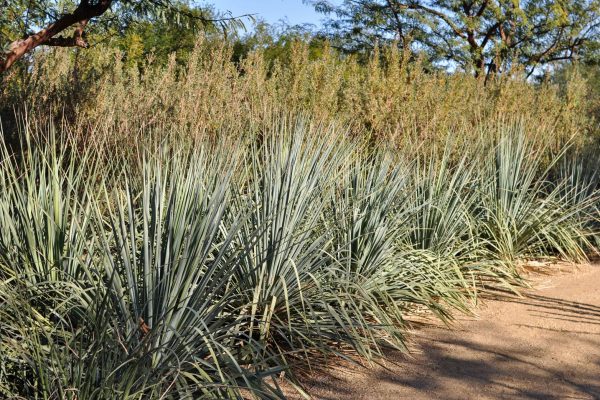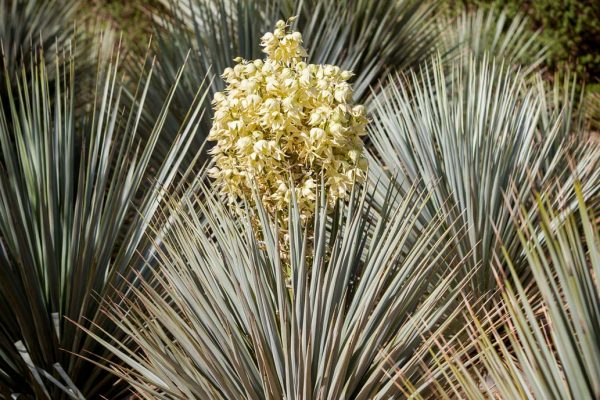
Our Lord’s Candle can grow in two varieties, as a single or multi-clumped growth pattern. This is another species that can appear to be a rather large bunch grass or multi-mounded bunch grass, but is indeed a Yucca down to its sharp and rigid leaves. The long, blue-green to gray-green leaves are teethed and grow outward to create a globe shape to the plant.
This Yucca’s flowering stem can grow up to 13 feet, displaying bright white flowers that may have a purple tint. The stigma on Our Lord’s Candle is green, brush-like, and ends in a compact head, which is unique to this species. Like the agaves, this species of Yucca is monocarpic, meaning it will die after it blooms. In the mounding (or clumped) variety, each individual plant will bloom before completing its lifecycle. This can take many years, and some will live up to fifty years.
Our Lord’s Candle naturally occurs in chaparral and coastal scrub habitats in southern California and Baja California. Other varieties occur in the Mojave Desert and at the Grand Canyon in Arizona. It is heavily cultivated in the southwestern United States and in Europe.

Beaked Yucca is most obvious in the wildflower field. Entering from the path that starts in the middle of the parking lot and taking the route to the left, it lies immediately ahead on the left side of the path. When it was originally planted at ground level, it appeared like rigid bunch grass. In recent seasons, it began to be more obvious as a trunking species that will rise up between 6 and 15 feet. As each new row of leaves dies, it falls downward to create a skirt effect on the trunk. It can grow single or multi-headed branches. Its leaves are mostly rigid and may or may not have a slight curve.
Rostrata, like other yuccas, is truly in its glory when it blooms. Its large candelabras of pure white blooms signals that it is another species attractive to nocturnal pollinators, which is common in the desert. The main pollinator of yuccas is the Yucca Moth. They have a special symbiotic relationship with this genus and, although other pollinators may visit, the Yucca Moth is the real partner. The plant’s fruit is shaped with a point like a beak, which is why it is nicknamed Beaked Yucca.
The distribution of Beaked Yucca is in the states of Chihuahua and Coahuila in northern Mexico, and western Texas in the United States.

